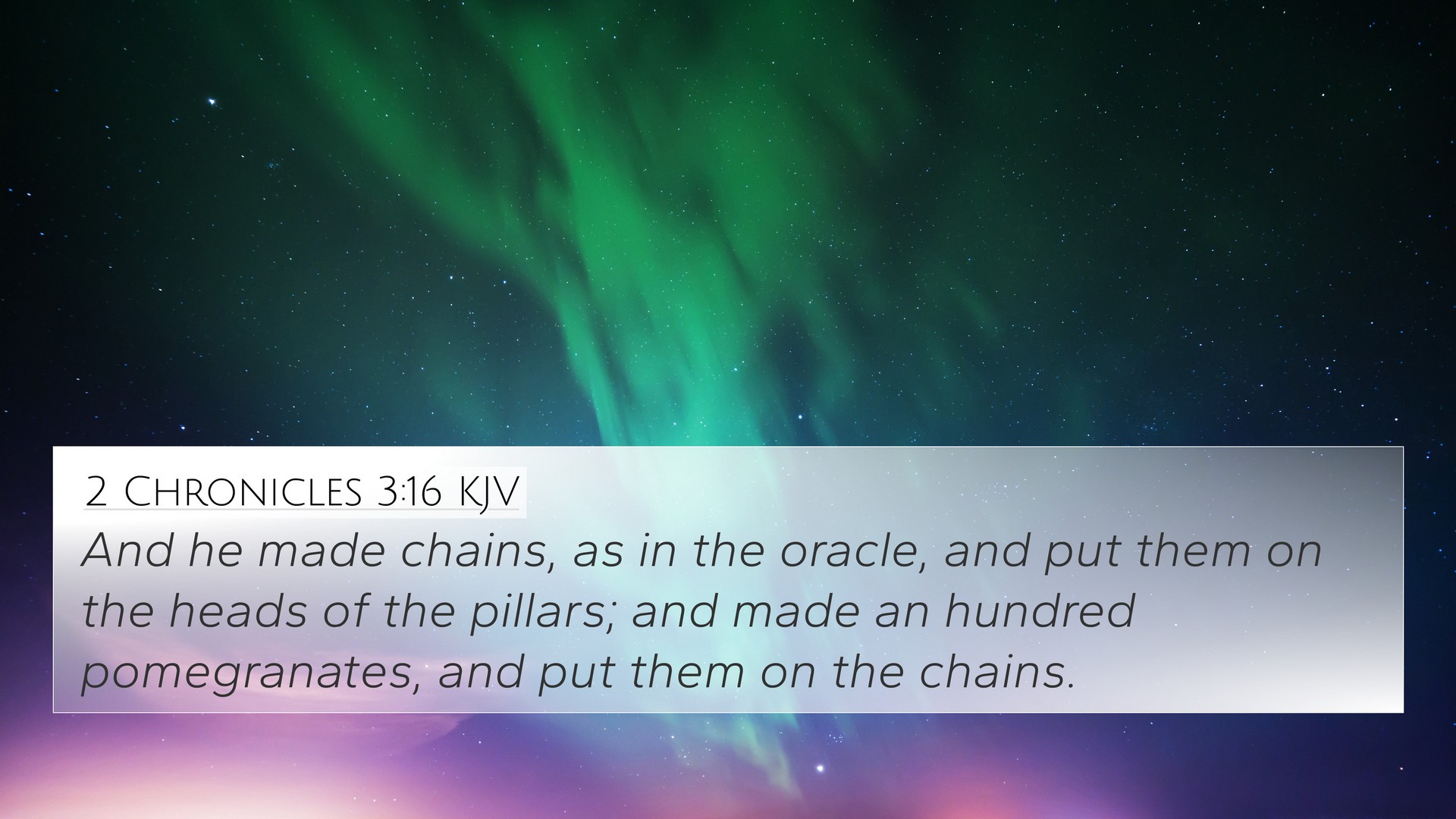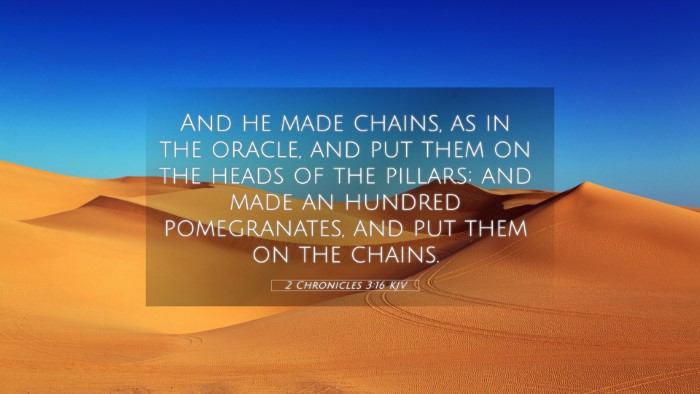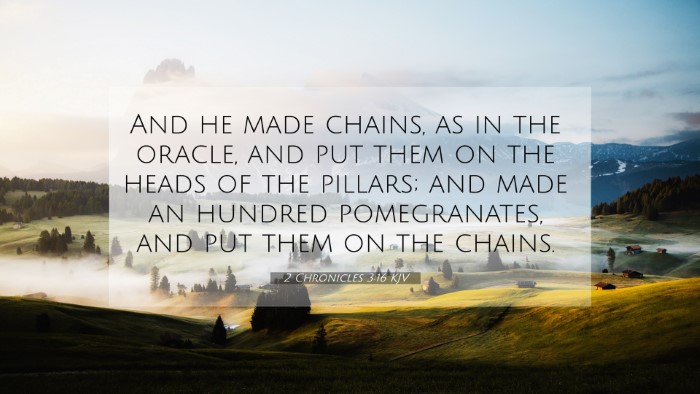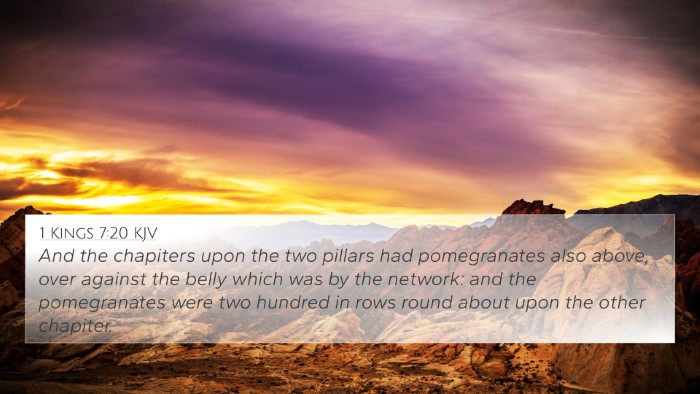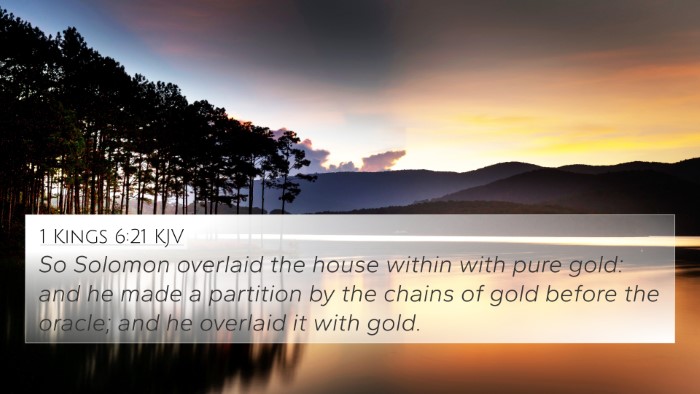Understanding 2 Chronicles 3:16
2 Chronicles 3:16 states, "And he made in the oracle two cherubims of image work, and overlaid them with gold." This verse provides insights into the craftsmanship and significance of the furnishings within the temple built by Solomon. It is essential to delve into the commentary of various biblical scholars to fully grasp its implications.
Exegesis and Commentary
This verse is significant for several reasons, particularly in the context of the ancient Israelite worship practices:
- Matthew Henry Commentary: Henry emphasizes the artistic excellence and the profound spiritual symbolism of the cherubim. He highlights that these figures represented the divine presence and majesty of God, and that they were placed in the innermost sanctum (the oracle) to signify God's throne room among His people.
- Albert Barnes Notes: Barnes provides additional insight into the materials and craftsmanship involved. He explains that the cherubim were overlaid with gold, representing purity and sanctity, which were vital attributes in the context of the worship of Yahweh.
- Adam Clarke's Commentary: Clarke remarks on the scope of Solomon's work, noting that the elaborate depictions of the cherubim show the glory of God and His protection over the temple and His people. He connects this notion to other passages in the Bible, where cherubim served as guardians of sacred spaces.
Thematic Connections
When examining 2 Chronicles 3:16, it is important to consider its thematic connections throughout the Bible:
- Divine Presence: The cherubim serve as a reminder of God’s dwelling among His people (Exodus 25:22).
- Guardianship: In Genesis 3:24, cherubim were set to guard the way to the Tree of Life, indicating their role as protectors of sacred things.
- Worship and Reverence: The imagery in this verse connects to Hebrews 9:5, where cherubim are associated with the mercy seat in the context of worship.
Cross-References
Several cross-references enhance our understanding of this verse:
- Exodus 25:18-22 - Instructions for making cherubim for the mercy seat.
- 1 Kings 6:23-28 - Parallel account of the constructed cherubim in Solomon’s temple.
- Ezekiel 10:1-22 - Vision of cherubim that showcases their importance in divine revelation.
- Revelation 4:6-8 - Depiction of heavenly beings resembling cherubim, emphasizing their ongoing role in heaven.
- Psalm 80:1 - Acknowledgment of God as the Shepherd seated between the cherubim.
- Isaiah 37:16 - Reference to the Lord of hosts, enthroned above the cherubim.
- Micah 6:6-8 - A call for true worship echoing the significance of God’s presence in worship settings.
Interpretive Insights
Interpreting the verse requires examining both historical context and its modern implications:
- Old Testament Context: The craftsmanship of the cherubim reflects the importance of meticulous dedication in worship and the representation of divine attributes.
- New Testament Application: The concept of God’s presence transitioning from a physical place in the temple to among believers through the Holy Spirit (John 14:17).
Conclusion
2 Chronicles 3:16 highlights the integration of art, worship, and theology in the biblical narrative. By studying this verse alongside its cross-references, one can appreciate the continuity of God’s message throughout scripture. Using tools for Bible cross-referencing, we unveil the interconnectedness of God’s word, enriching our understanding of His nature and our relationship with Him.
